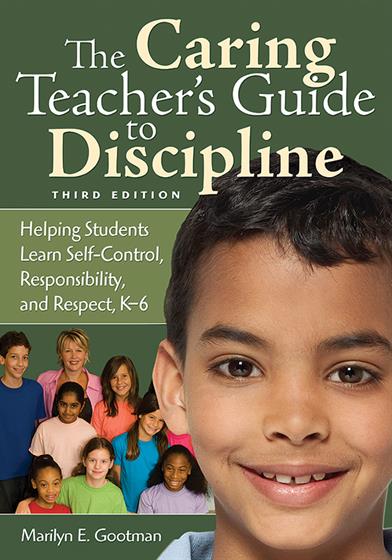Foreword to the First Edition by Carl D. Glickman
Preface to the Third Edition
Acknowledgments
About the Author
Introduction: Caring Teachers Can Make a Difference
What Is Caring Teacher Discipline?
Caring Teacher Discipline Saves Time and Reduces Stress
Caring Teacher Discipline: An Approach for All Students
The Basic Assumption
Summary of Main Points
1. Creating a Caring Community
Caring Classroom Relationships: A Win-Win Situation
Establishing Caring Relationships With Our Students
Establishing Caring Relationships Among Our Students
Engaging Parents as Partners in Discipline
Insecure Attachment to Adults: A Relationship Challenge
Summary of Main Points
2. Setting the Stage for Appropriate Behavior
Space: There’s a Place for Everything
Time
Class Meetings
Summary of Main Points
3. Expectations, Limits, and Rules
Unreasonable Barricades: How Students Respond
No Fences: How Students Respond
Waist-High Fences: How Students Respond
How to Build Waist-High Fences
Summary of Main Points
4. Encouragement, Praise, and Rewards
Encouraging
Praising
The Artful Critique
Rewarding
Summary of Main Points
5. Social and Emotional Learning
Recognizing and Labeling Feelings
Communicating Feelings Nonhurtfully
Listening to Others
Caring Teacher Listening: A Preventive Discipline Tool
Summary of Main Points
6. Harnessing and Channeling Anger Into Constructive Outlets
Defusing Student Anger on the Spot
Helping Students Harness Anger
Preventing Student Anger
Harnessing Our Own Anger
Summary of Main Points
7. Tracking Down the Cause of Misbehavior
Looking in the Mirror
Understanding Common Cause of Misbehavior
Summary of Main Points
8. What to Do After Students Misbehave
Low-Key Discipline
Discipline With a Capital D: Problem Solving
Contract for Prevention
The Benefits of Problem Solving for Students
Teaching Our Students Problem Solving
Group Problem Solving
Summary of Main Points
9. Consequences for Misbehavior
Choosing a Consequence
Differentiating Between Consequences and Punishments
More About Problem Solving for Consequences
Summary of Main Points
10. Strategies for Chronic, Annoying Misbehaviors
Kinds of Misbehaviors
Summary of Main Points
11. Bullying: Prevention and Intervention
Definition of Bullying
Prevention
Intervention
Cyber Bullying
Summary of Main Points
12. Enhancing Resilience: Strategies for Misbehavior Resulting From Childhood Trauma
What Is Childhood Trauma?
Our Role
Behavior Problems That Could Be Manifestations of Trauma
Summary of Main Points
Conclusion
Resource A – Suggested Readings
Resource B – Recommended Programs
References
Index



